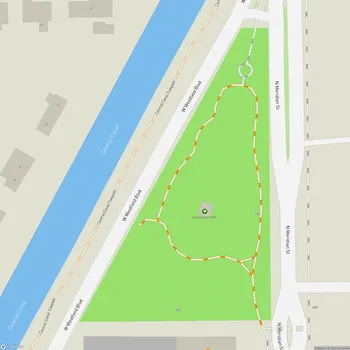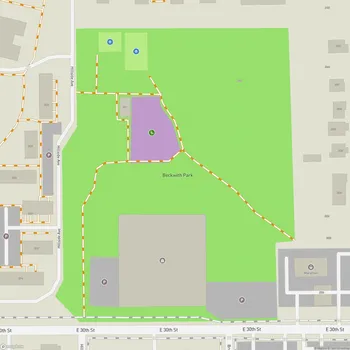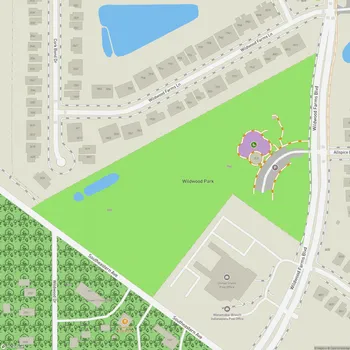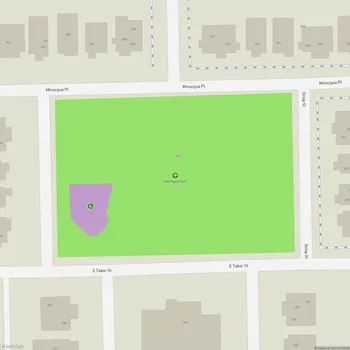Fort Harrison State Park
Interactive Park Map
About Fort Harrison State Park
Natural Beauty Escape
Located in Indianapolis, Fort Harrison State Park spans 1,700 acres of surprising tranquility amidst urban surroundings. The park contains one of central Indiana's largest hardwood forests, offering a peaceful nature retreat that makes you forget you're still in the city.
Fall Creek winds its way through the park for about 3.5 miles, adding a serene soundtrack to your visit. The landscape is delightfully varied - from the reflective waters of Delaware Lake to wetlands, dense woodlands, and open prairie areas. It's an ideal setting whether you're looking to break a sweat or simply sit back and watch wildlife go about their day.
A Military Past
There's something special about walking through history, which you can experience here. Once part of Fort Benjamin Harrison, a military base that operated from 1902 until 1991, the grounds hold stories from decades of American military history. If you look closely, you'll come across remnants of a former Citizen's Military Training Camp, a Civilian Conservation Corps camp, and even a World War II prisoner-of-war camp.
History buffs will appreciate exploring the Camp Glenn Historic District and the fascinating Museum of 20th Century Warfare. The museum houses compelling exhibits about the area's military significance, along with artifacts from soldiers who once called the fort home. It's a window into our past that adds depth to your visit.
Trails for Every Explorer
With approximately nine miles of hiking trails crisscrossing the park, there's a path waiting for explorers of all abilities. The trails range from leisurely strolls to more challenging routes, each well-marked and maintained.
If you're up for a bit of a challenge, Lawrence Creek Trail and Schoen Creek Trail offer more demanding terrain for hikers and mountain bikers. For those preferring a smoother journey, the paved Harrison Trace Trail welcomes bikers, joggers, strollers, and in-line skaters. This accessible path is particularly great if you're pushing a stroller or using mobility assistance.
Recreation for Everyone
Beyond hiking, the park features a variety of activities. Anglers can cast their lines into Fall Creek or the park's lakes, while golf enthusiasts can tee off at the 18-hole course or practice at the driving range. If you're looking to extend your stay, the historic Fort Harrison Inn provides comfortable accommodations right in the heart of the park.
Kids light up at the multiple playgrounds around the park, with the hillside slide being a particular favorite. For family gatherings, you can find numerous picnic areas equipped with tables, grills, and shelters scattered across the grounds.
When winter blankets the park in snow, the fun doesn't stop - you can try ice fishing, speed down one of the area's largest sledding hills, or glide across the landscape on cross-country skis. Dog owners will appreciate the dedicated dog park, complete with water fountains designed for both human and canine visitors.
Wildlife Encounters
The park teems with life year-round. You might spot herons wading in the shallows, deer moving silently through the woods, or foxes darting between trees. For bird enthusiasts, the park is particularly rich - over 100 species have been recorded here, making it especially rewarding during migration seasons.
For those curious about the natural world, the park's interpretive center functions as an educational hub with informative displays about the ecosystem and regional history. During certain times of year, you might even have the opportunity to join guided foraging walks to learn about identifying edible plants - a unique skill to take home from your visit.
All Features & Facilities
Active Recreation
Nature & Wildlife
Water Features & Activities
Visitor Services
Food & Gathering
Photo Gallery
ParkMagnet Score
Top Park
Park Size
Opening Hours
Weather
Top Restaurants Near Fort Harrison State Park
Fitzgerald's Lunch House
0.2 miles9130 Otis Ave, Indianapolis, IN 46216
Popular sandwich shop serving fresh, quality lunch fare with friendly service and excellent daily specials.
Cafe Audrey at Fort Ben
0.2 miles9134 Otis Ave, Indianapolis, IN 46216
Cozy brick-lined restaurant serving creative breakfast favorites, sandwiches, and burgers with gluten-free options available.
La Hacienda Mexican Restaurant
0.2 miles5625 Lawton Loop E Dr, Indianapolis, IN 46216
Vibrant Mexican restaurant featuring generous portions of traditional dishes served on a spacious outdoor patio.
Top Hotels Near Fort Harrison State Park
Fort Harrison Inn
In the park5830 N Post Rd, Indianapolis, IN 46216
Historic hotel in a peaceful setting offering comfortable accommodations with spacious rooms and continental breakfast.
Tru by Hilton Indianapolis Lawrence
0.3 miles5660 Lawrence Village Pkwy, Indianapolis, IN 46216
Modern hotel offering clean, comfortable rooms with smart TVs and a welcoming lobby area.




